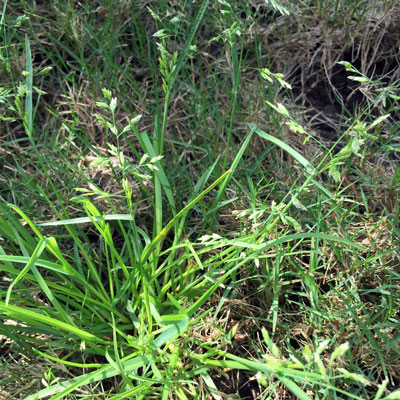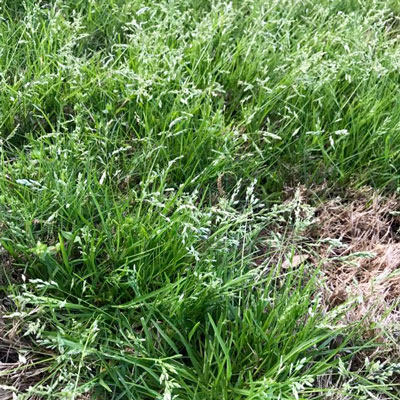Question of the Week – Number 1: February 27, 2020

“Why do we still have weeds in spite of application of pre-emergents last fall?”
There are several possible reasons that you might have weeds now in spite of application of pre-emergent granules last fall. These are the ones that come to my mind:
• You may have missed the proper timing. For most of Texas that would fall between August 25 and September 5. At least that’s been my experience. I used to recommend dates that were a slight bit later, but people kept complaining that they still had weeds in the spring. Once I shifted to the 8/25-9/5 time period the complaints seemed to wither to a much smaller number. As I once heard an Extension turf specialist tell a crowd, “Once you can see a weed seedling growing, you’ve blown it for control with a pre-emergent weedkiller for another whole year.”
• You could have used one of the three common pre-emergents (or one of the less common ones): Dimension, Halts or Balan. If so, these are intended to prevent primarily grassy weeds such as annual bluegrass, rescuegrass and ryegrass. If the weeds you are seeing now are broadleafed weeds such as clover, dandelions, chickweed, henbit and thistles among others, you should have used Gallery pre-emergent granules in that same 8/25-9/5 time period. Gallery is specifically intended for prevention of broadleafed weeds.
It’s important to note that you do not get a second chance to control grassy weeds after the pre-emergent dates have passed. However, with broadleafed weeds you can use a spray containing 2,4-D to eliminate the small seedlings in late fall (somewhere in late November) before they gain size, start blooming and going to seed.
• You may have used the wrong rate of application, or you may not have been careful in your technique of spreading the granules. This is especially a problem for folks using old-fashioned drop spreaders (as opposed to rotary spreaders).

• You may not have watered the granules into the surface of the soil immediately after you applied them. That’s critical in creating a layer of herbicide through which the germinating seeds cannot emerge.
• Conversely, if you had a heavy, washing rain soon after the application, your granules could have been washed away. Most of Texas didn’t have that happen in fall 2019, but it certainly did happen in September 2018.
So, where do you go from here?
Mow your lawn to remove as many of the weeds as you can.
As the surviving weeds start to regrow, spray all the broadleafed types with a 2,4-D broadleafed herbicide.
As for the grassy types of weeds, just put up with them. They will meld into your turfgrass as your permanent lawn begins to green up. Then they will die away as it turns hot in late April or early May. Mark your calendar to remind you to apply pre-emergent granules at the end of August this year.
